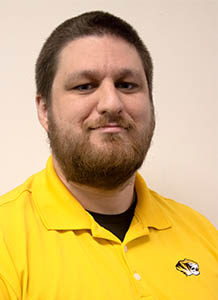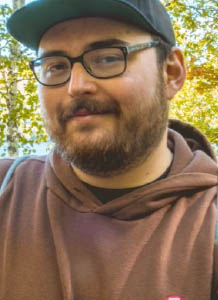November 07, 2022

Interested in designing digital assets for video games? Intrigued by the idea of building virtual worlds? Want to be part of movie-making magic?

Mizzou Engineering can give you the skills you need to succeed.
In the Department of Engineering and Information Technology, students learn how to model and animate objects that are then used in more advanced augmented, virtual and mixed-reality environments.
“We teach you how to build and supply digital assets,” said Michael Tompkins, an assistant professional practice professor who teaches 3D modeling and animation. “With it being part of an IT program, it gives you the opportunity to go into industry and move around as needed. Modeling and animation are definitely foundational skills that will prepare you for a variety of careers.”
For Kenny Clark, BS IT ’17, learning modeling and animation at Mizzou led to a successful career in visual effects.
He came to Mizzou with plans to pursue a traditional IT career but discovered he could combine information technology skills with his interest in filmmaking.

“I really enjoyed working in 3D and creating something from essentially nothing to entertain and wow people,” Clark said, encouraging others who are interested to pursue a similar career path. “If you enjoy movies and want to help make visual effects, you can. It’s a big industry, and you don’t have to be creative; you can be more technical oriented. Nowadays, visual effects are used in almost every movie.”
Using the skills he learned, Clark became an effects artist, creating digital photoreal simulations for Sonic the Hedgehog, Kong vs Godzilla, and Disney’s live action remake of The Little Mermaid.
Currently, Clark is an Effects Technical Director at Framestore in Vancouver, where he creates physics-based effects such as fire, smoke, water, and destruction. He visited campus earlier this fall to show students that it’s possible to follow a similar path.
And it’s not just movie effects and game design that provide career options for those who have modeling and animation skills. From fashion to home décor, more industries are embracing mixed reality tools to give customers and clients personalized experiences. Regardless of the application, these apps, web tools and other interactive media require the creation of digital assets, meaning job opportunities are vast for those equipped with modeling and animation skillsets.
“In my course, students are getting accustomed to the tool sets they need,” Tompkins said. “But the important thing is that they learn the principles of animation and modeling, not just the tools. Regardless of where a graduate works, they can translate those principles to create whatever is needed for that company.”
Learn modeling and animation at Mizzou Engineering. Apply today!